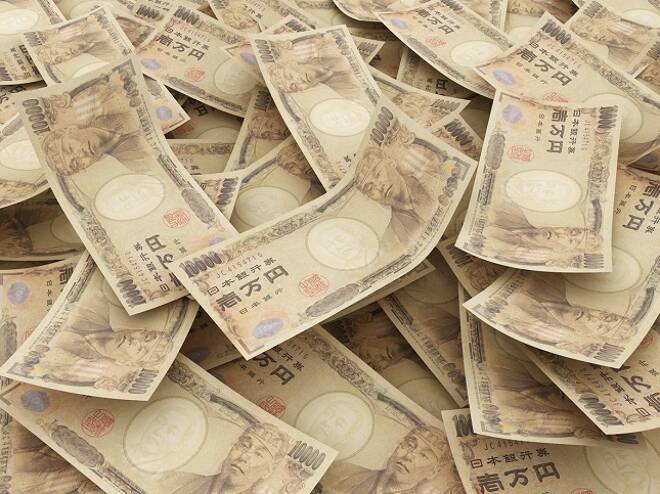Advertisement
Advertisement
USD/JPY Fundamental Daily Forecast – One-Week Yen Volatility Against Dollar Jumps to Seven Month High
By:
In a quarterly report, the BOJ trimmed its growth forecast for the current fiscal year ending March 2021 to a 5.5% contraction from a 4.7% slump.
Despite steady global equity markets, investors are still buying the Japanese Yen for protection against heightened volatility ahead of the November 3 presidential election, driving the Dollar/Yen Forex pair lower on Thursday.
The safe-haven Japanese Yen held gains against the U.S. Dollar on Thursday as escalating coronavirus cases in Europe stoked fears across the financial markets that fresh lockdowns would further hit the already fragile global economic recovery.
At 09:15 GMT, the USD/JPY is trading 104.217, down 0.113 or -0.11%.
Financial market volatility is helping to make the Japanese Yen an attractive safe-haven asset. Equity and currency volatility shot higher on Wednesday and the cost of sourcing U.S. Dollars rose, reflecting fears that the U.S. election and resurgent COVID-19 pandemic could tip markets back into the sort of chaos endured earlier this year.
A sell-off in March wiped a third off the value of U.S. stock indexes over a three-week period and the premium for cash dollars hit multi-year highs as the pandemic slammed markets and locked down economies.
One-week yen volatility against the U.S. Dollar rose to their highest in nearly seven months, nearly doubling from a day ago as the maturities now encompass election day on November 3 and the day after.
Bank of Japan Ends Two-Day Policy Meeting – Keeps Monetary Settings Unchanged
The Bank of Japan on Thursday trimmed its economic and price forecasts for the fiscal year ending in March 2021, heightening expectations it will maintain its massive stimulus for the time being to cushion the blow from COVID-19.
As widely expected, the central bank kept monetary policy steady, including a -0.1% target for short-term interest rates and a pledge to guide long-term rates around 0%.
It also made no changes to a package of measures to ease corporate funding strains caused by the coronavirus pandemic.
BOJ Quarterly Report Outlook
In a quarterly report on the outlook, the BOJ trimmed its growth forecast for the current fiscal year ending March 2021 to a 5.5% contraction from a 4.7% slump projected in July, reflecting sluggish service spending during the summer.
It also downgraded this fiscal year’s core consumer price forecast to a 0.6% fall form a 0.5% drop seen in July. However, the BOJ revised up its forecast for the next fiscal year to a 3.6% increase, against a 3.3% expansion seen in July.
It also upgraded its assessment on exports and output to say they were “increasing”. That compared with the view in July, when it said they were falling sharply.
“Japan’s economy will likely improve as a trend as the impact of the coronavirus pandemic gradually subsides, though the pace of recovery will be moderate,” the report said.
For a look at all of today’s economic events, check out our economic calendar.
About the Author
James Hyerczykauthor
James Hyerczyk is a U.S. based seasoned technical analyst and educator with over 40 years of experience in market analysis and trading, specializing in chart patterns and price movement. He is the author of two books on technical analysis and has a background in both futures and stock markets.
Did you find this article useful?
Latest news and analysis
Advertisement
